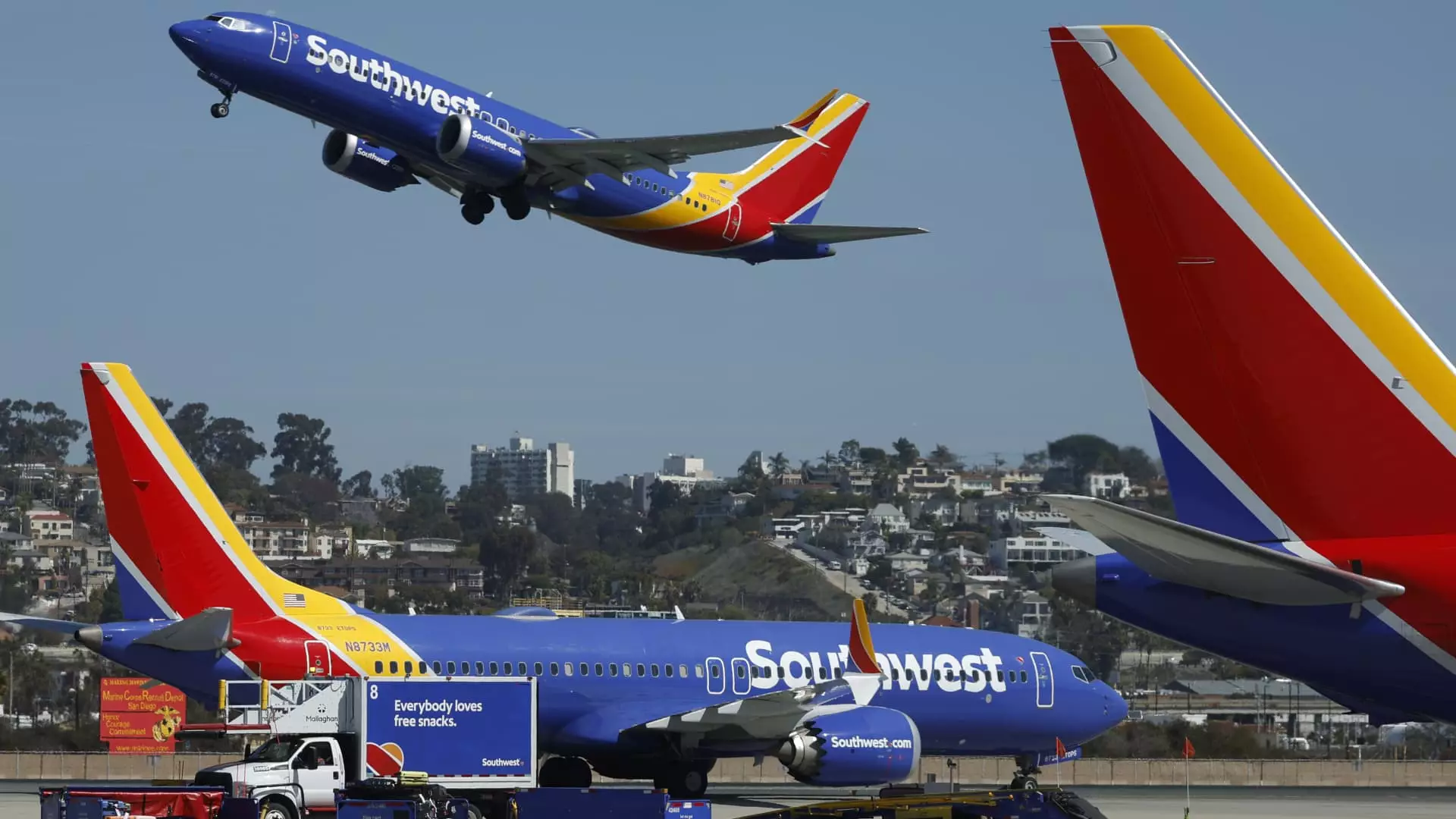In the bustling world of air travel, Southwest Airlines has always charted its own course, oftentimes steering clear of the mainstream trends that permeate the industry. Yet, in an age where consumer expectations soar as high as the airplanes themselves, it seems that change is not just necessary but inevitable. Southwest’s CEO, Bob Jordan, revealed a willingness to consider airport lounges, premium seating, and even long-haul international flights, all in a bid to win over discerning, high-spending customers. This revelation is not merely an admission of changing tides; it’s an acknowledgment that the airline must adapt or risk losing its competitive edge.
The landscape for airlines has drastically shifted, and with it, the expectations of travelers. In a recent interview, Jordan stated, “Whatever customers need in 2025, 2030, we won’t take any of that off the table.” This flexibility represents a significant pivot from the airline’s well-known staunch stance on a no-frills model. The upcoming decade might very well demand more than just budget travel options; it requires forward-thinking strategies that resonate with evolving consumer desires.
Revisiting the Core Values
For decades, Southwest Airlines established its identity around low fares, free checked bags, and open seating policies that distinguished it from traditional carriers. However, as CEO Jordan indicated, competition has pushed the boundaries of customer expectations, forcing Southwest to reconsider elements that were once sacrosanct. The introduction of basic economy tickets and specified bag fees denoted an unsettling transformation, revealing pressure from rival airlines that have boldly embraced more luxurious offerings.
The fundamental question arises: At what point does a commitment to affordability dilute the essence of what made Southwest unique? Striking a balance between maintaining core values and adapting to market demands will be crucial. One can argue that abandoning the open seating strategy for more premium seating could alienate loyal customers who have cherished that distinct Southwest experience. It’s a delicate dance between innovation and tradition.
International Ambitions on the Horizon
The prospect of long-haul international flights marks perhaps the most ambitious avenue for Southwest Airlines. While the love for budget travel remains evident, the allure of European destinations cannot be overstated, especially in markets like Nashville, a stronghold for the airline. Travelers are eager for options that transcend the typical domestic routes. Yet, jumping into the international arena requires more than just a shift in philosophy; it necessitates formidable investments in aircraft capable of long distances—a gigantic leap from their unwavering reliance on the Boeing 737.
Jordan’s assertion that “we are open to looking at what it would take to serve that mission” is tantalizing yet vague. An open-minded approach is commendable, but there exists a palpable uncertainty. With competitors like Delta and United already reaping benefits from expanded international offerings, Southwest must act swiftly or risk becoming an afterthought in the eyes of travelers yearning for more.
Transforming Negatives into Assurances
Interestingly, despite introducing changes like basic economy tickets, Jordan suggests that Southwest has not seen a significant loss of customers to competitors. This could reflect customer loyalty or perhaps a lack of compelling alternatives. However, as summer fares dwindle and travel patterns evolve, the airline’s future hinges on transforming perceived negatives into positive assurance—sustaining customer faith amidst an unpredictable environment.
Moreover, investing in airport lounges is a vital step in re-engaging those seeking comfort and luxury while traveling. The armada of seasoned competitors has left no stone unturned in enhancing passenger experience, from upscale lounge spaces to premium offerings. Ignoring these elements puts Southwest at risk of being overshadowed.
Fostering Future Growth through Customer Insights
Southwest’s journey ahead relies heavily on understanding what its customers genuinely want and are willing to pay for. As Jordan indicated, the Nashville market craves upscale amenities, which highlights an opportunity for the airline to tap into localized demands while reinforcing its national footprint. By actively listening to customer feedback and aligning strategies accordingly, Southwest can bolster its market position.
Innovation should not come at the expense of the values central to an airline’s DNA. If Southwest navigates its transformation thoughtfully, it may not only capture the high-spending demographic but also redefine what it means to be a low-cost carrier in a high-end world. After all, it’s not merely about survival; it’s about thriving in a competitive and increasingly luxurious travel landscape.


Leave a Reply